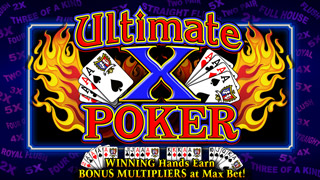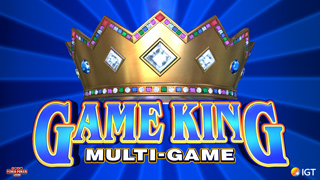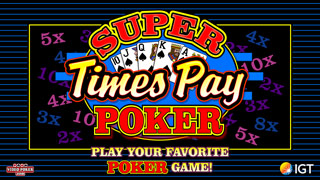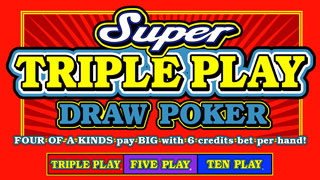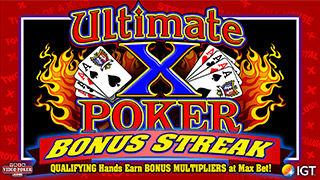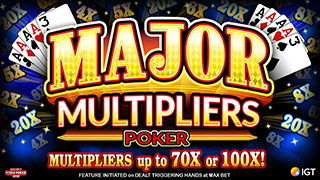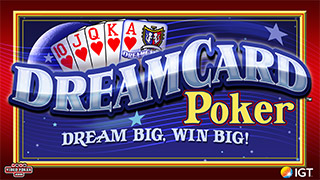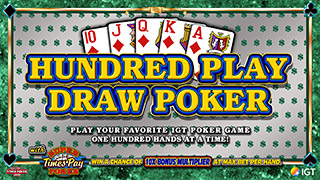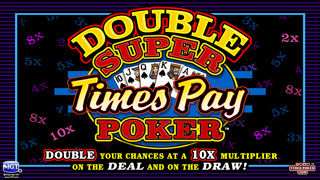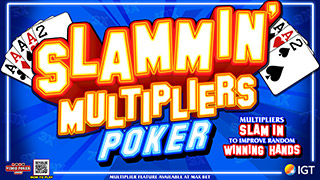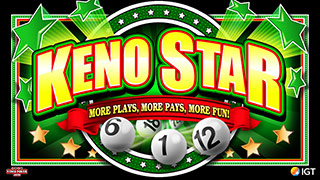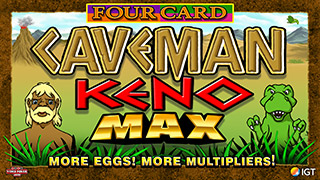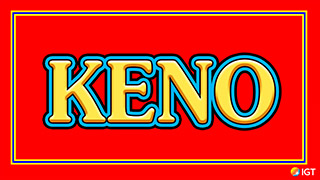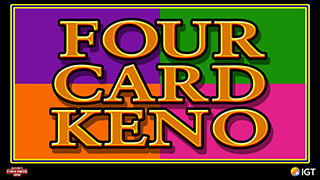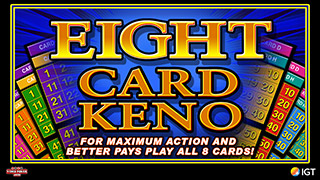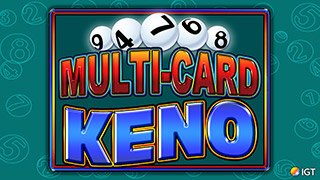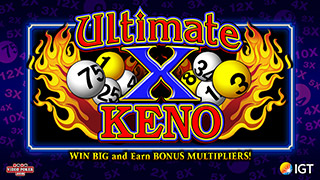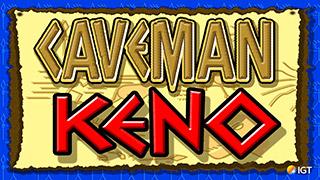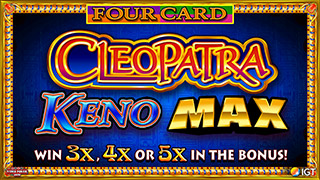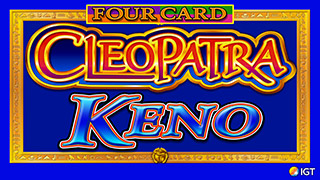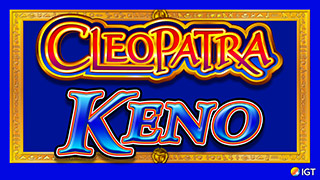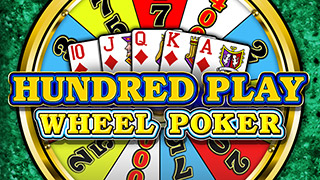An easy/er way to think about EV-run 'em 47 times
-
Minn. Fatz
- VP Veteran
- Posts: 525
- Joined: Mon May 07, 2007 12:22 am
An easy/er way to think about EV-run 'em 47 times
Watching a discussion on the April contest message board about whether to hold a FH with Aces over kickers in TDB or break it up to go for the bonus 4oak got me thinking about an easy, or at least an easier, way to think about one-card draws and expected value (EV).
Ever watch High Stakes Poker, Poker after Dark or those other Hold ‘Em cash game shows when two players agree to “run a hand” more than once after one of them goes all-in? After the players face their hole cards, the dealer turns however many cards they need to make five community cards, then sets those cards aside to “run” another trial from the cards left in the deck. We can apply that process to the VP situation above.
Say you’re dealt AAA33 in TDB and want to know whether to keep the FH, paying 45, or throw one 3 and go for the 4oak, paying 4000. Just “run the hand” (52 - 5) = 47 times, using all the cards left in the deck! To make it easier, put the two remaining treys and the case Ace at the very bottom of the deck before you start.
The first time you run the hand you wind up with 3oak, paying 15, or 30 less than the FH. The second time, same result, minus 30 for a total of minus 60, the third time you’re minus 90, etc., until after 44 “runs” you’re minus (44 x 30) = 1320 compared to keeping the full houses. The next two times you get one of the threes for another FH and a push.
But the last time that lonely old A shows up and you’re plus 3955 compared to keeping the FH! Your grand total is plus 2635 compared to holding the FH 47 times; so your EV from going for the 4oak once is (2635/47), about 56.1 more than holding the FH (about 101.1 total).
So it’s true that if you go for the 4oak once, you’ll probably have “lost” 30 credits; if you go for it twice, you’ll probably “lose” 60, etc.
But if you go for it 47 times, one of those times the A will hit and you’ll “win” more than you “lost” over the other 46 “runs.”
The point of advantage play is that you do go for the 4oak every time because, while you can’t know whether the A will hit “this time” or not, you do know that in the long run it will hit once out of every 47 times. Disregarding a certain vocalist’s outlook here, and to paraphrase the immortal words of one Bob Dancer, winners know when to throw out something that’s only good in order to try for something that’s a lot better.
(Expanding the one-card draw scenario to multiple-card draws involves considering every combination of cards that might come up and doing the same kind of math; more complicated but, in principle, the same procedure.)
A final note: In the chat discussion someone rapped throwing the kicker from the FH, saying something like “that’s the way the casinos want you to play.” Well, that’s the way the advantage players want you to play, too, because unless enough people misplay the good machines the casinos will take them off the floor and they won’t be there for us to take advantage of any more!
-
New2vp
- Video Poker Master
- Posts: 1878
- Joined: Mon Sep 11, 2006 4:02 am
Hey Minn, Good explanation. It is sad and amusing at the same time when people give advice...but shouldn't. But remember the people asking for free advice may simply be getting their money's worth.
-
BillyJoe
- Video Poker Master
- Posts: 3198
- Joined: Sat Aug 23, 2008 2:00 pm
I like your analogy, Minn. The only problem I have with it in VP is that you would have to play to infinity for all of that to occur. In your "run the cards", what happened previously (ie the next card dealt) affects what happens next, namely that card has been removed from the deck, and will no longer appear. In VP, each of the 47 remaining cards have an equal chance of appearing, regardless of what happened the previous opportunity. Therefore, each time you get AAA33, it should be independent in result from the previous time it occurred. If I am missing something, let me know, please. I play TDB whenever I can, so this would be an important educational opportunity for me. BTW, I just keep the three A's, and draw two cards with that opportunity.
-
Minn. Fatz
- VP Veteran
- Posts: 525
- Joined: Mon May 07, 2007 12:22 am
You're right, billyjoe, that your results over a run of 47 independent trials are probably going to be different from "running the cards." And I should have clarified that if we invented a game called 47-Play TDB, throwing one kicker card from AAA33 wouldn't result in exactly one bonus 4oak, two FH and 44 3K every time. It might result in no 4oak; on the other hand, it could -- and sometimes would -- result in two or three 4oaks.
And again, that's the point of advantage play. To make the probabilities even out means playing for a long time, possibly to infinity (if not beyond). But there is some chance our short-term results are going to be better than the average. And since there's no way of telling how the independent trial we're on right now is going to turn out, we play the probabilities rather than playing it safe or playing our hunches. More than a few billion-dollar properties on the Vegas Strip have been financed by people playing safe or playing hunches.
Looking at your suggestion, throwing 33 from AAA33, is a good introduction to the more than one-card draw case.
Drawing two cards from the remaining 47, there are 1,081* different combinations. (It's easier in this case to start at the top of the paytable; also to calculate only the total payout rather than the difference between the total and holding the FH).
In those cases where we do draw the case Ace, 10 of the remaining 46 cards make our bonus 4oak (four each of deuces and 4s and the two remaining treys). The other 36 times we make a "regular" quad Aces for a 1000 payout.
There are 67 paired combinations that make another FH (six each of the 11 ranks not in our initial hand and one remaining pair of 3s).
The remaining 968 times we only get 3K.
Doing the math:
10 x 4000 = 40000
36 x 1000 = 36000
67 x 45 = 3015
968 x 15 = 14520
sum of the above = 93535
divide by the number of combinations (1084) = about 86.5 per trial on average, less than the about 101.1 average from drawing one to AAA3.
Any good VP training program (I use WinPoker and ViPoker) will show you these numbers for all the possible draws from a given initial hand. That's what they use to calculate the "best" -- in terms of expected value -- draw.
* (47 x 46)/2, or combin(47,2)
And again, that's the point of advantage play. To make the probabilities even out means playing for a long time, possibly to infinity (if not beyond). But there is some chance our short-term results are going to be better than the average. And since there's no way of telling how the independent trial we're on right now is going to turn out, we play the probabilities rather than playing it safe or playing our hunches. More than a few billion-dollar properties on the Vegas Strip have been financed by people playing safe or playing hunches.
Looking at your suggestion, throwing 33 from AAA33, is a good introduction to the more than one-card draw case.
Drawing two cards from the remaining 47, there are 1,081* different combinations. (It's easier in this case to start at the top of the paytable; also to calculate only the total payout rather than the difference between the total and holding the FH).
In those cases where we do draw the case Ace, 10 of the remaining 46 cards make our bonus 4oak (four each of deuces and 4s and the two remaining treys). The other 36 times we make a "regular" quad Aces for a 1000 payout.
There are 67 paired combinations that make another FH (six each of the 11 ranks not in our initial hand and one remaining pair of 3s).
The remaining 968 times we only get 3K.
Doing the math:
10 x 4000 = 40000
36 x 1000 = 36000
67 x 45 = 3015
968 x 15 = 14520
sum of the above = 93535
divide by the number of combinations (1084) = about 86.5 per trial on average, less than the about 101.1 average from drawing one to AAA3.
Any good VP training program (I use WinPoker and ViPoker) will show you these numbers for all the possible draws from a given initial hand. That's what they use to calculate the "best" -- in terms of expected value -- draw.
* (47 x 46)/2, or combin(47,2)
-
BillyJoe
- Video Poker Master
- Posts: 3198
- Joined: Sat Aug 23, 2008 2:00 pm
Thank you, Minn. I feal enlightened. The math is actually even worst for the Strip Casinos that we usually play, which pay 800 (not 1000) for Aces, and 10 (not 15) for trips on TDB. If I understood your calculations, and substituted the pay tables we see, I get 75.2 (not 86.5). Seriously, I enjoy reading and listening to others about the math in VP, but I am pragmatic enough to know that I do not play casino VP (I live in FLA) enough to truly have it work for me. My wife is even worst. She will play the "possible" rather than the "probable" hands with her card holds, so I would hate to find out what her calculated return really is. I'll be in Vegas next week, so there will probably be more "kicker" holds in my TDB play. Thanks again..



